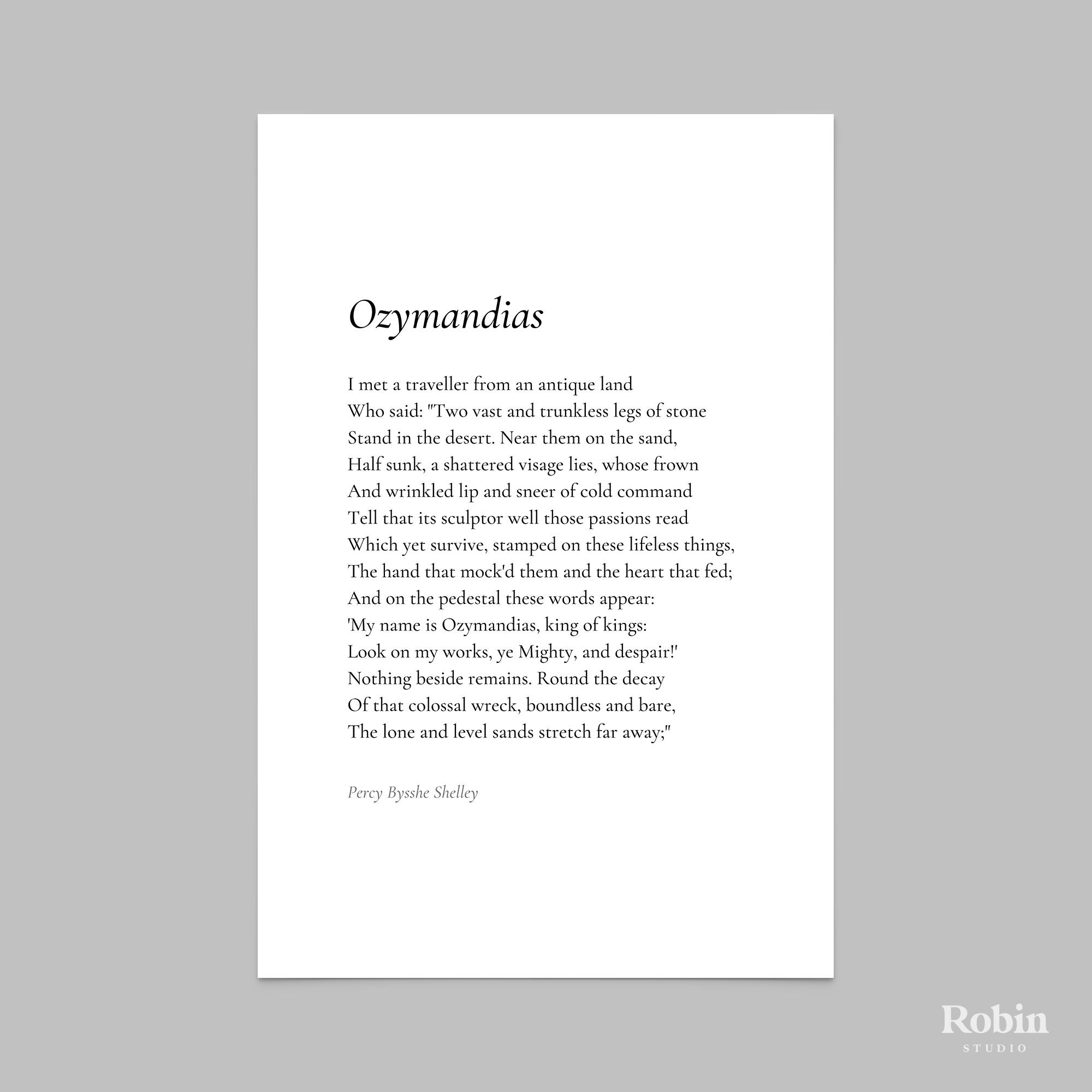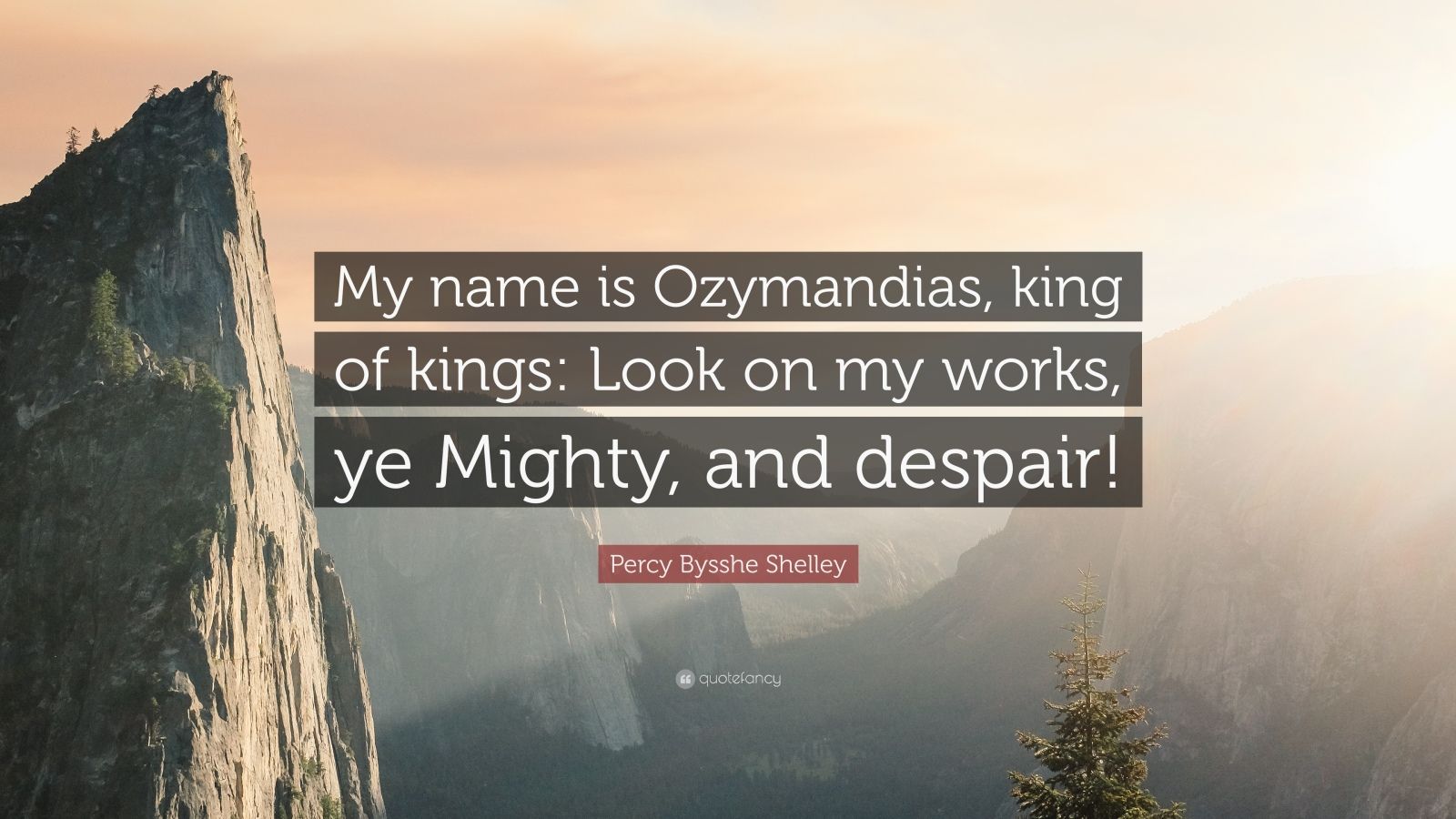
(“Two vast and trunkless legs of stone/ stand in the desert,” he intones, by way of greeting, perhaps gesticulating wildly. That relic, in turns, falls into the sights of “a traveler from an antique land”-a frantic-eyed adventurer who can’t even manage a polite hello before grabbing the poem’s speaker by the lapels. At the “center” (is there a center? Paging Jacques Derrida …) floats the pharaoh, a transient human mystery whose meaning is interpreted and solidified by the sculptor who recreates him in stone. (I like to compare it to a Turducken.) The multiple voices, perspectives, and subjectivities nestled inside are similarly intricate and mind-boggling. Fry won’t deny that “Ozymandias” has an ironic soul, but he locates its mischief in an elaborate game Shelley is playing-on the reader.Ĭritics like to compare Shelley’s sonnet to one of those Chinese boxes that contain ever-smaller replicas of themselves. Joke’s on you, Oz! Can I call you Oz? Who cares! You’re just some rubble in the desert.Įxcept, according to the Romantic scholar Paul Fry, the poem is up to something far more complex than poking fun at a pharaoh’s empty dreams of immortality. “Shattered” and “half sunk,” the “wreck” languishes in “lone and level sands.” Given Shelley’s anti-imperial leanings, the scornful takeaway seems obvious: So much for all that arrogant posturing. The sculpted likeness, which bears his “wrinkled lip” and “sneer of cold command,” is inscribed with a boast: “My name is Ozymandias, King of Kings / Look on my Works, ye Mighty, and despair!” By the time we encounter the colossus, though, it has fallen into ruin. A great tyrant, otherwise known as Egyptian pharaoh Ramses II, has apparently commissioned a monument to his lofty works. We’d always thought of “Ozymandias” as a textbook example of dramatic irony-the gulf in understanding between a character speaking lines and an audience hearing them.

As we prepared to put away our notes from high school English class, though, we had a “You’re Doing It Wrong: Shelley” moment.

These rule breaks hint at a poem that is going to step outside convention and say something that is disturbing and revolutionary.Here at Brow Beat, Sharan Shetty made a case for why “Ozymandias” and Breaking Bad go together like ephedrine and red phosphorus: Both center on figures of passionate, monomaniacal ambition both explore the (weirdly seductive, or at least commanding) nature of evil, especially as pitted against a more impersonal but equally violent power-time. Although the rhythm is largely that of iambic pentameter, this is broken at places (such as line 3). Shelley also stretches the “rules” by using half-rhymes (stone/frown and appear/despair). However, the rhyme scheme-ABABACDCEDEFEF-is unlike that of either traditional sonnet form-Petrarchan or Shakespearean. The poem is a sonnet, consisting of 14 lines with the traditional “volta” or turning point at line 9. The lone and level sands stretch far away.” Commentary and Analysis The Sonnet's Form Of that colossal Wreck, boundless and bare Look on my Works, ye Mighty, and despair! The hand that mocked them, and the heart that fed

Which yet survive, stamped on these lifeless things,

Tell that its sculptor well those passions read Half sunk a shattered visage lies, whose frown,Īnd wrinkled lip, and sneer of cold command, Who said-“Two vast and trunkless legs of stone


 0 kommentar(er)
0 kommentar(er)
